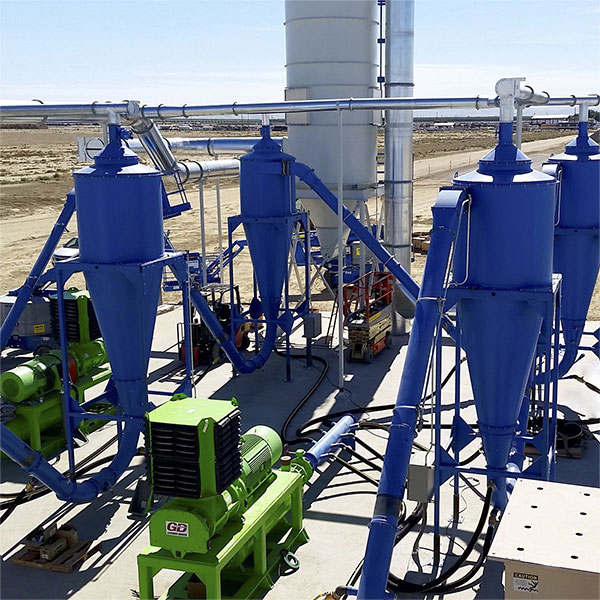Dryclone® Drying System
The high moisture content of biomasses such as agricultural waste, municipal solid waste, and sludge has always been a limiting factor in secondary use of these materials. Traditional drying of those types of materials is a cost intensive and energy intensive process while conventional mechanical drying methods are often unable to reduce moisture sufficiently. As a result, drying has often been a barrier to the low-cost disposal or profitable reuse of these materials. The Dryclone system changes that.
Until now, expensive and time-consuming sorting of municipal solid waste was needed to separate dry material from wet. The material that was already dry could be used as fuel for a variety of purposes, including waste to energy. The remaining wet material was not used and constituted an expense for disposal. With the Dryclone system, this sorting is no longer needed since the Dryclone can dry all the material to a uniform level as low as 5-15% moisture, making it excellent for a wide variety of applications.
Biomass Feedstocks:
- Municipal solid waste including food and green waste
- Municipal biosolids
- Food waste
- Paper sludge
- Animal manure
- Spent grain
- Green waste
- Coal ash
- Nut waste
- Agricultural waste
-
Bagasse
-
Hemp
Any other raw material that needs to be dried, pulverized, blended or homogenized.

